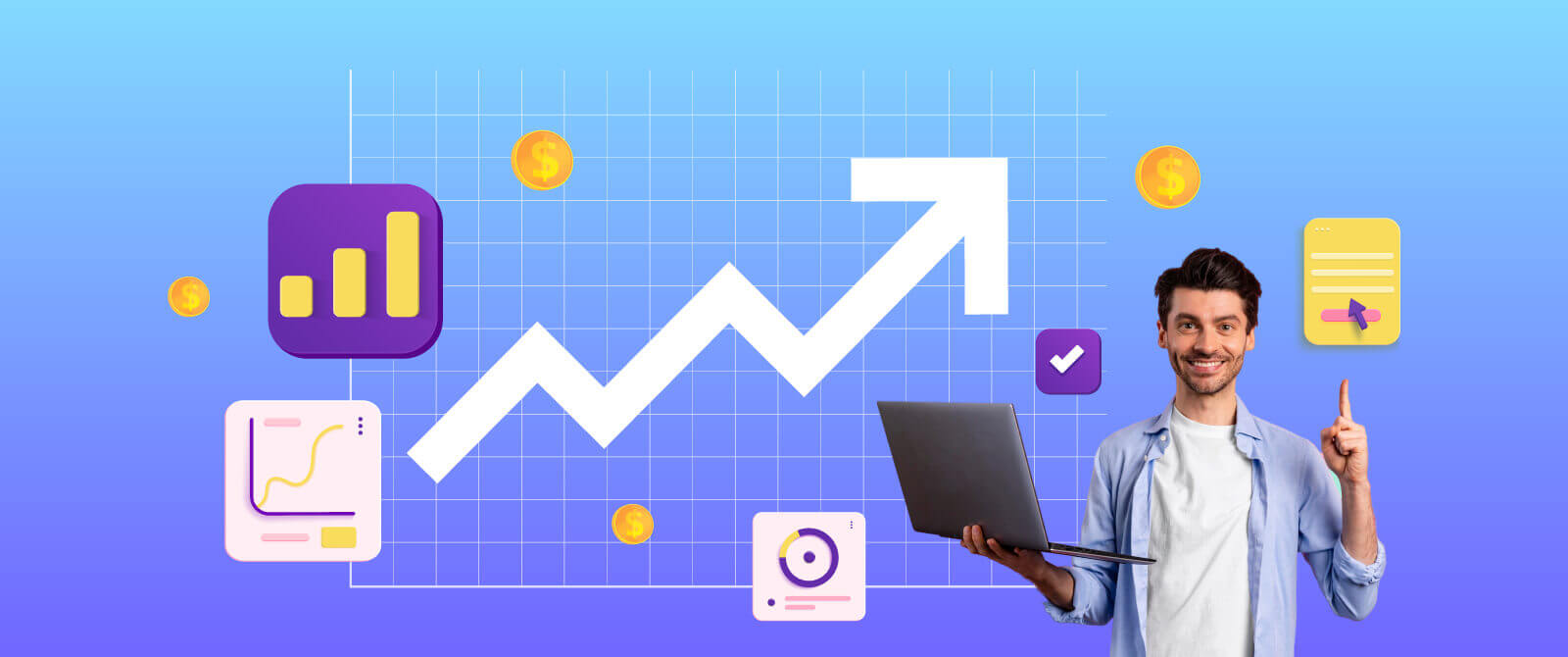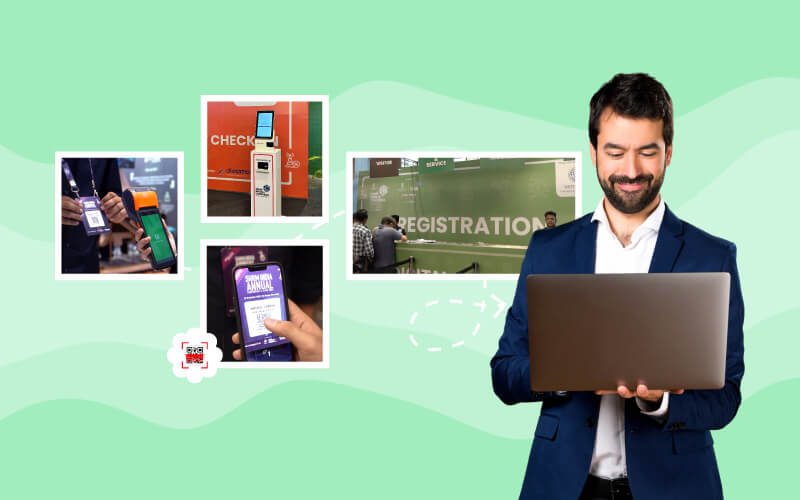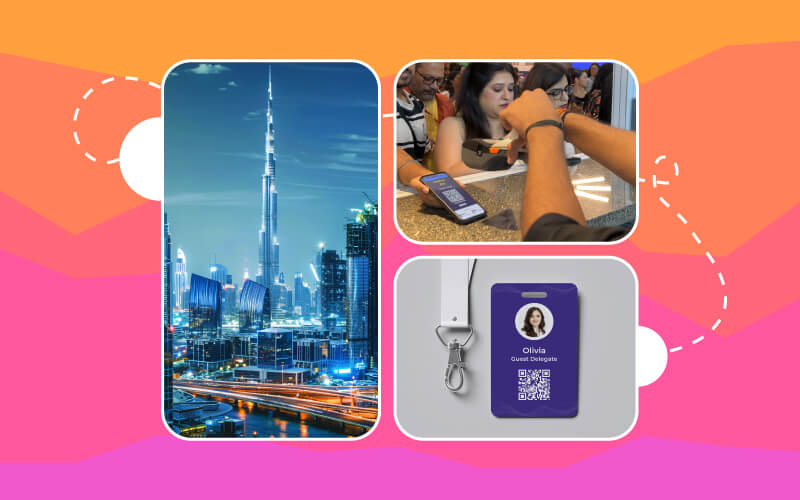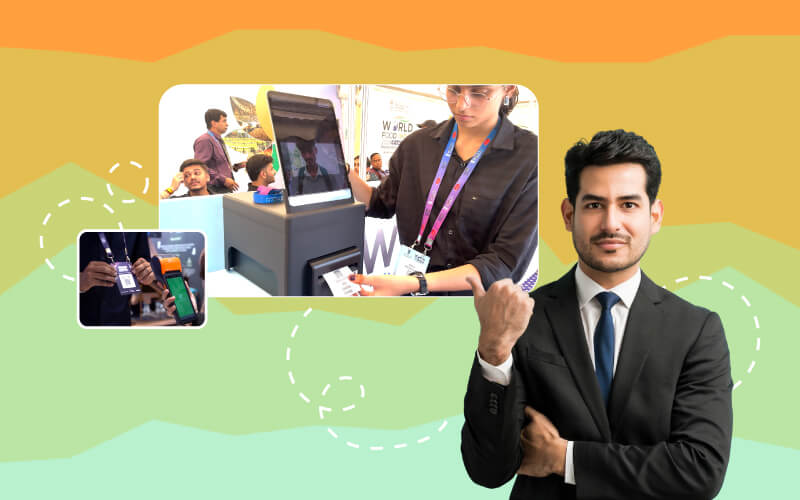The event industry has undergone a profound transformation with the advent of Internet of Things (IoT) technology. This innovation has revolutionized how event planners handle attendee management, security, and engagement. By leveraging IoT for event management solutions. Event hosts can free up treasured insights, optimize operations, and deliver seamless experiences that drive improved ROI.
The Internet of Things for events is now integral technology throughout diverse sectors, such as; planning, execution, and enhanced audience engagement. From real-time information utilization for informed decision-making to streamlining attendee experiences, IoT is reshaping event management practices. Here in this blog, we are going to explore the multi-diverse aspects of how the Internet of Things for event planners is useful. Also, we will learn about its advantages, trends, technology, application, and other core elements. So without further ado, let’s get started;
Top 5 Applications of IoT for Event Management With Concrete Examples
In every industry there are a great number of applications of the Internet of Things and event management is no exception. To give a brief context the “IoT for event management transforms gatherings into dynamic experience. By seamlessly integrating technology to enhance attendee engagement and operational efficiency.” Here are the top five use case scenarios;
1. Attendee Management and Registration
IoT technology, which include RFID (Radio Frequency Identification) and NFC (Near-Field Communication), have streamlined the event registration and test-in technique. Attendees can tap their RFID-enabled badges or NFC-enabled smartphones to quickly take a look at-in, eliminating long queues, and manual information access. This automation no longer simply enhances the attendees’ engagement. However additionally provides event planners with real-time data on attendance and visitors.

Expanding on this, take a situation in which a large automotive conference implemented RFID badges for their attendees. By integrating these badges with the event’s mobile app, organizers have been able to track attendee movement in real-time, optimize resources, and reduce wait times at popular attractions. Like keynote seminars and networking events. This ended in a smoother event experience and higher usual delight amongst attendees.
2. Mobile Event Apps
IoT-enabled mobile event apps, powered through Bluetooth Low Energy (BLE) beacons, can transform the attendee experience. These apps can offer personalized schedules, interactive 3d wayfinder maps, and push notifications to keep attendees updated about the event. Beacons strategically positioned can track attendee geo locations and ship relevant records, such as interaction with exhibitor booths or session updates, immediately to their organizers app.
For example, at the latest property expo, organizers used BLE beacons to create customized event agendas for each attendee based on their pursuits and session attendance history. The app sent actual-time notifications about upcoming classes, sales space locations of hobby, and exceptional networking possibilities. This personalized technique now not most effectively expanded attendee engagement. But additionally facilitated meaningful connections between contributors and exhibitors.
3. Event Check-in and Security
IoT-powered safety solutions, which include smart event check-in, facial recognition, and crowd tracking systems, can enhance the safety and security of the events. Automated check-in systems, included with IoT devices, can verify attendee identities and provide entry to authorized personnel, whilst additionally monitoring crowd actions to identify safety issues and ultimately eliminating counterfeits or trespassers.

To illustrate, an excessive healthcare summit deployed facial check-in recognition technology for streamlined attendee check-ins and more advantageous safety features. This generation now not only expedited the access method. However also provided organizers with actual-time insights into attendee flow and behavior. Taking into account, proactive modifications in security measures in the course of the event has been done.
4. Engagement and Networking
IoT wearables, inclusive of smart badges and RFID-enabled lanyards, can facilitate networking and engagement among attendees. These devices can store attendee data, permitting seamless alternate touch details and fostering meaningful connections. Additionally, IoT-powered interactive displays and gamification elements can create an immersive experience and that keep attendees actively taking part in the course of the event.
Consider a scenario in which a worldwide recognized event included; IoT wearables with interactive presentations that supplied personalized guidelines based totally on attendee choices and behavior. Attendees should engage with exhibitors more effectively, accumulate digital brochures instantly, and participate in gamified challenges that recommended exploration of various cubicles. As a result, attendees exhibitor ROI soared, showcasing the potential of IoT in enhancing event engagement.
5. Operational Efficiency and Cost Savings
IoT sensors can monitor and optimize diverse components of event operations, which includes power consumption, catering, and logistics. By accumulating actual-time facts on resource utilization. Event planners could make knowledgeable choices to reduce waste, optimize resource allocation, and in the end decrease operational fees.

For instance, a music festival used IoT sensors to reveal strength intake at exceptional tiers and vendor booths. By reading these analytics. Organizers recognized top energy usage periods and changed schedules as a result to decrease prices without compromising attendee experience. This proactive method now not most effectively decreased operational fees. However also more desirable sustainability efforts, reflecting definitely at the event’s logo photograph.
How Event Planners Can Increase ROI Incorporating Internet of Things?
The integration of IoT technology in event control affords a giant possibility for event planners to increase their return on funding (ROI). By leveraging the information and insights generated by using IoT systems, event experts can:
- Enhance Attendee Engagement: IoT-powered personalization and interactive stories can power higher attendee pleasure, mainly to expand event attendance, sponsorship possibilities, and repeat enterprise.
- Optimize Operations and Reduce Costs: IoT-enabled automation and useful resource optimization can result in great fee savings, permitting event planners to allocate more sources towards enhancing the overall event.
- Improve Event Planning and Decision-Making: The wealth of data gathered thru IoT structures can offer treasured insights, allowing event planners to make statistics-driven selections, refine their techniques, and supply greater successful events within the destiny.
- Offer Unique Sponsorship Opportunities: IoT-powered event stories can appeal to sponsors who’re keen to leverage the technology and data to attain their target audience in progressive ways, generating additional revenue streams for event organizers.
Benefits of IoT in Event Management & How it Enhances Attendee Experience
Here are the important thing approaches event organizers can use IoT for event management to improve the attendee experience earlier than. At some point of, and after an event:
Before the Event
- Use IoT-enabled registration and take a look at-in systems to streamline the attendee check-in system, lowering wait instances and improving the primary impression.
- Leverage beacon technology and event apps to provide attendees with personalized schedules, maps, and recommendations primarily based on their pursuits and past event conduct.
- Integrate IoT sensors to screen venue situations like temperature, lights, and sound tiers to ensure a comfortable surrounding for attendees.
During the Event
- Utilize beacon era and RFID/NFC wearables to song attendee moves and engagement, imparting real-time insights to optimize event format and programming.
- Enable interactive reports via IoT-powered displays, gamification, and networking capabilities to boost attendee engagement and delight.
- Leverage IoT for event management for safety concerns like; smart locks, facial popularity, and crowd monitoring to enhance the safety and security of the event.
After the Event
- Analyze the wealth of data accrued through IoT structures to gain precious insights into attendee behavior, preferences, and ache factors, informing destiny event planning and optimization.
- Use IoT-powered submit-event surveys and comments mechanisms to acquire real-time attendee enter and continuously improve the event revel in.
- Leverage IoT-enabled logistics and supply chain management to streamline post-event operations, which include stock monitoring and aid optimization.
By strategically deploying IoT technology earlier than, at some point of, and after the event. Organizers can create an unbroken, customized, and information-pushed revel in that engages attendees, improves operational performance, and drives better ROI.
Future Trends and Possibilities
As the IoT era keeps adapting, the event management enterprise can assume to peer even extra transformative applications. Emerging traits include; the integration of Artificial Intelligence (AI) and Machine Learning (ML) to enhance predictive analytics and personalization. The incorporation of 5G connectivity to allow faster and extra dependable records transmission, and the convergence of IoT with augmented fact (AR) and virtual reality (VR) to create really immersive event reviews.
Summing Up
The integration of IoT technology in event control has ushered in a new generation of performance, engagement, and ROI optimization. By leveraging the electricity of IoT, event planners can streamline operations, enhance attendee reports, and make facts-driven decisions that pressure the fulfillment in their events. As the industry continues to conform, the future of event management holds infinite possibilities, with IoT technology at the leading edge of this transformative journey.







